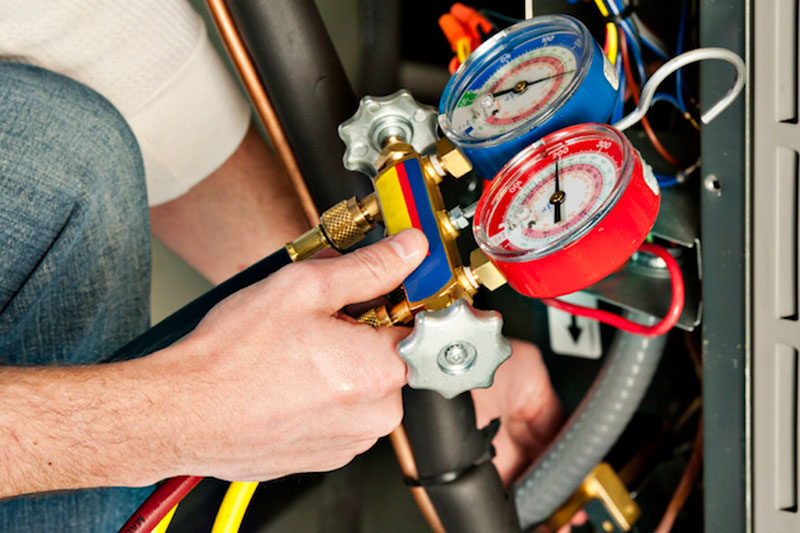
You might not think often about how your air conditioner functions, but it needs refrigerant to keep your home cool. This refrigerant is bound by environmental laws, since it contains chemicals.
Depending on when your air conditioner was put in, it may use R-22, R-410A or R-32 refrigerant. We’ll review the differences and which air conditioner refrigerants are being phased out in Frederick, plus how these phaseouts affect you.
What’s R-22 and Why Is It No Longer Being Made?
If your air conditioner was put in before 2010, it possibly contains Freon®. You can learn if your air conditioner uses it by calling us at 301-690-0397. You can also look at the name plate on your air conditioner condenser, which is located outside your residence. This sticker will contain information on what model of refrigerant your AC has.
Freon, which is also known as R-22, has chlorine. Scientists consider R-22 to be damaging to the earth’s ozone layer and one that contributes to global warming. The Environmental Protection Agency, which controls refrigerants in the United States, outlawed its manufacture and import in January 2020.
I Use an Air Conditioner with R-22. Do I Need to Get a New One?
It differs. If your air conditioning is running correctly, you can continue to use it. With routine air conditioner maintenance, you can expect your system to last around 15–20 years. However, the Department of Energy reports that removing a 10-year-old air conditioner could save you 20–40% on annual cooling bills!
If you don’t get a new air conditioner, it may create a problem if you have to have air conditioning repair in the future, specifically for refrigerant. Repairs can be higher-priced, since only small amounts of recycled and reclaimed R-22 is on hand.
With the phaseout of R-22, most new air conditioners now have Puron®. Also referred to as R-410A, this refrigerant was developed to keep the ozone layer healthy. Because it requires a varying pressure level, it doesn’t work with air conditioners that need R-22 for cooling.
However, Puron still has the possibility to create global warming. As a consequence, it could also eventually be phased out. Although it hasn’t been disclosed yet for residential air conditioners, it’s anticipated sometime this decade.
What Refrigerant Will Take the Place of R-410A?
In preparation of the discontinuation, some companies have begun using R-32 in new air conditioners. This refrigerant rates low for global warming likelihood—about one-third less than R-410A. And it also reduces energy use by approximately 10%, according to the Intergovernmental Panel on Climate Change’s Fourth Assessment Report. That’s savings that could be sent on to you through your cooling bills.
May's Heating & Air Can Help with All Your Air Conditioning Needs
In brief, the alterations to air conditioner refrigerant probably won’t impact you greatly until you require repairs. But as we discussed previously, repairs connected to refrigerant can be more costly due to the restricted quantities on hand.
Not to mention, your air conditioner frequently stops working at the worst time, frequently on the warmest day when we’re receiving a lot of other calls for AC repair.
If your air conditioner uses an outdated refrigerant or is aging, we advise installing an up-to-date, energy-efficient air conditioner. This ensures a trouble-free summer and might even lower your electrical bills, especially if you get an ENERGY STAR®-rated system. Plus, May's Heating & Air has many financing programs to make your new air conditioner fit your budget. Contact us at 301-690-0397 to get started now with a free estimate.
